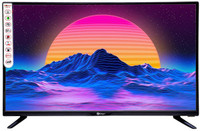How To Buy The Best Laptop: Save Money Or Pick Premium Models? Check This Buying Guide
When shopping for a new laptop, the glitter of premium models with hefty price tags can be tempting. In fact, buying the best laptop can mean saving money or picking premium models; consult this guide to make the smartest choice for needs.
Do You Really Need an Expensive Laptop? Breaking Down The Price vs Value Debate.
A laptop has quietly become more than just a machine; it's a lifeline for work, entertainment, studies, and even staying connected with loved ones. The market, however, feels like walking into a sweet shop with endless shelves: sleek ultrabooks flaunting their thin frames, gaming beasts glowing with RGB lights, and dependable workhorses that simply get the job done. But here's the tricky bit: does paying ₹1,50,000 for a laptop truly make sense when there are machines under ₹50,000 claiming to deliver solid performance? Much like choosing between a roadside chai and an artisan latte in a swanky café, it's often less about the cost and more about what suits your taste, lifestyle, and budget.
Decide whether to save money or choose premium models when buying a laptop, using this guide for smart, budget-friendly decisions. Let's break down the tug-of-war between price and value, one thoughtful point at a time.

While buying the best laptop around, do you really need to splurge, or will a budget-friendly device do? Let us unpack the debate between price and value in the world of laptops; Photo Credit: Unsplash
Breaking It Down: What Really Matters In A Laptop
1. The Glitter Of Premium Designs
There's no denying it: expensive laptops know how to turn heads. Slim aluminium builds, razor-thin bezels, and feather-light bodies make them feel like jewellery for the tech-savvy. Opening one in a café feels almost like a status symbol, similar to parking a shiny SUV outside a small-town tea stall.
But here's the question: is the polished exterior worth spending an extra ₹60,000 or more? For many, the thrill of flaunting an ultra-thin laptop fades quickly, while scratches and fingerprints still find their way onto the body. Mid-range laptops may not be as glamorous, but they carry their own charm: sturdy plastic builds that survive everyday bumps, with enough finesse to look professional.
It's the same as owning a designer kurta versus a simple handloom one, both cover you well, but one might leave a hole in the wallet for little added utility.
2. Performance vs Daily Needs
High-end laptops boast cutting-edge processors, jaw-dropping RAM, and storage that could rival a library. But pause for a moment. Most people open a browser, stream videos, type documents, attend meetings, and occasionally dabble in Netflix marathons. For these needs, even a laptop under ₹45,000 runs just fine.
Unless you're editing 4K videos, running heavy simulations, or gaming with graphics cranked to ultra, paying for a powerhouse may be overkill. It's like buying a high-performance sports bike to navigate traffic jams on MG Road, impressive, but unnecessary.
Think of your laptop as a kitchen appliance: you don't need a massive oven if your idea of cooking is reheating yesterday's biryani. Performance should match your lifestyle, not your daydreams.
3. Battery Life: The Real Game-Changer
Laptops often get compared on processing power or looks, but battery life is the true silent hero. Premium models often advertise 10–15 hours of usage, but reality is usually closer to 7–9 hours, depending on how you push them. On the flip side, many mid-range laptops can comfortably give 5–7 hours, enough for classes, office work, or a day of travel.
Imagine being stuck on a Shatabdi Express without a charging point in sight. In that moment, a laptop that stretches its battery feels like a saviour. Does an extra two hours justify doubling the budget? For some, yes. For others, a decent power bank or the discipline to charge before leaving home does the trick.
Battery life is less about luxury and more about planning. Paying more doesn't always guarantee peace of mind; it's about how you manage your digital companion.
Also Read: How To Buy A Laptop Bag That Will Not Strain Your Shoulders: Know What To Look For
4. Software and Ecosystem Influence
Expensive laptops often come with operating systems and features that blend seamlessly into an ecosystem. For instance, some models sync perfectly with your smartphone, tablet, or smartwatch, creating a cocoon of convenience. The joy of answering calls on your laptop while your phone lies across the room can feel magical.
Yet, let's be honest, most of us don't live inside an ecosystem bubble. A budget laptop with Windows can handle Zoom calls, emails, and office apps without fuss. Free software alternatives for design, writing, or coding save thousands of rupees.
It's like having a membership at an elite gym when most of your exercise happens during morning walks in the park. Paying for premium features you'll rarely use might not be the smartest move. Choose software flexibility over brand prestige, and suddenly, a mid-range machine looks like a smart buy.
5. The Upgrade Trap
One often overlooked aspect is how long a laptop stays relevant. Premium devices promise longevity with upgradable storage or memory, but here's the catch: technology evolves faster than fashion trends. Within three years, even the flashiest laptop starts to feel outdated.
Mid-range laptops, despite their lower specs, often serve reliably for 4–5 years if treated with care. Spending ₹90,000 for 'future-proofing' sometimes feels like buying Diwali sweets in bulk; by the time you're ready to eat them, they've lost their freshness.
Practical users know when to stop chasing upgrades and instead accept the natural life cycle of gadgets. Buying a well-priced laptop every few years can be more cost-effective than holding onto an expensive one that feels old before its EMI finishes.
6. The Student Dilemma
Students, especially, face the pressure of choosing laptops that balance budget and performance. Parents often get swayed by shiny displays at showrooms, believing pricier models guarantee better futures. But what does a student truly need? Online classes, research, presentations, and maybe the occasional movie night.
A solid ₹40,000–₹50,000 machine can handle this with ease. Shelling out ₹1,20,000 for a premium laptop for a college-goer often ends with it being used for binge-watching web series and assignments typed at the last minute.
It's the equivalent of gifting a luxury car to someone who just got their learner's licence. Sometimes, practicality beats prestige, and students benefit more from affordable laptops that leave room in the budget for books, courses, or even a celebratory pizza party.

Do You Really Need an Expensive Laptop? Breaking Down Price vs Value; Photo Credit: Unsplash
7. Gaming vs Reality
Gaming laptops are the ultimate temptations: massive frames, glowing keyboards, and the promise of escaping into another world. But here's the truth: most casual gamers stick to lighter titles that don't demand monstrous hardware. Paying ₹1,50,000 for a gaming beast, only to play FIFA or GTA occasionally, feels like buying a DSLR to click selfies.
For serious gamers who stream, compete, or build careers in esports, the investment makes sense. But for everyone else, mid-tier laptops with decent graphics cards handle the fun just fine.
If gaming is your weekend hobby, don't let FOMO trick you into financial regret. A ₹70,000 machine may bring the same joy without burning a hole in your savings.
8. Emotional Satisfaction vs Rational Choice
Technology purchases often tap into emotions rather than needs. The pride of unboxing a premium laptop, the smell of fresh packaging, and the thrill of owning 'the best' can cloud judgment. For a while, the emotional high feels worth every rupee.
But as months pass, most users settle into routines: typing reports, streaming cricket matches, scrolling social media. That expensive laptop soon feels like a regular tool, stripped of its aura. Meanwhile, the EMI reminders still arrive on time.
A rational approach asks a simple question: what will this laptop actually do for you every day? Balancing emotional satisfaction with practicality is the secret to avoiding regret.
9. Resale and Repair Costs
Here's a bitter pill: premium laptops often come with higher repair charges. A cracked screen or a faulty motherboard can cost half the price of a new mid-range laptop. Repairs for budget models, while still painful, don't sting as much.
Resale value, too, rarely matches expectations. Technology depreciates faster than cars, and few buyers want to pay more than half the original price, even for a premium brand. Mid-range laptops, bought at modest prices, feel easier to part with when it's time to upgrade.
Think of it like selling second-hand furniture; the more you paid initially, the more it hurts when buyers bargain shamelessly.
10. Finding the Sweet Spot
In the end, the debate boils down to striking a balance. Splurging makes sense for creators, coders, designers, or professionals whose work justifies the power of premium laptops. For everyone else, the sweet spot lies in machines priced between ₹45,000 and ₹70,000, offering dependable performance, decent designs, and long enough life to keep you happy.
Buying a laptop is less about chasing status and more about matching needs. Much like choosing the right pair of shoes, comfort and purpose matter far more than brand logos. The perfect laptop isn't always the priciest; it's the one that blends seamlessly into your daily life without demanding constant financial sacrifice.
Products Related To This Article
1. Lenovo IdeaPad Slim 3, Intel Core i5-12450H 12th Gen
2. New Dell 15 Laptop, Intel Core 3 100U Processor
3. HP 15, AMD Ryzen 3 7320U (8GB LPDDR5, 512GB SSD) FHD
4. Acer Aspire Lite, AMD Ryzen 3 5300U Processor
5. Lenovo IdeaPad 1 AMD Ryzen 5 5500U 15.6" HD Thin and Light Laptop
The glossy charm of expensive laptops can be alluring, but when stripped of marketing glitz, most people don't need them. A well-priced laptop, chosen wisely, can be every bit the dependable partner without draining savings. In a world where technology changes faster than festival fashion, value trumps vanity.
Next time you walk into a showroom, ask yourself: do you want a laptop that impresses strangers for a moment, or one that serves faithfully every single day? The real power lies not in the price tag, but in how well the machine aligns with your life. Shop now on Amazon.













